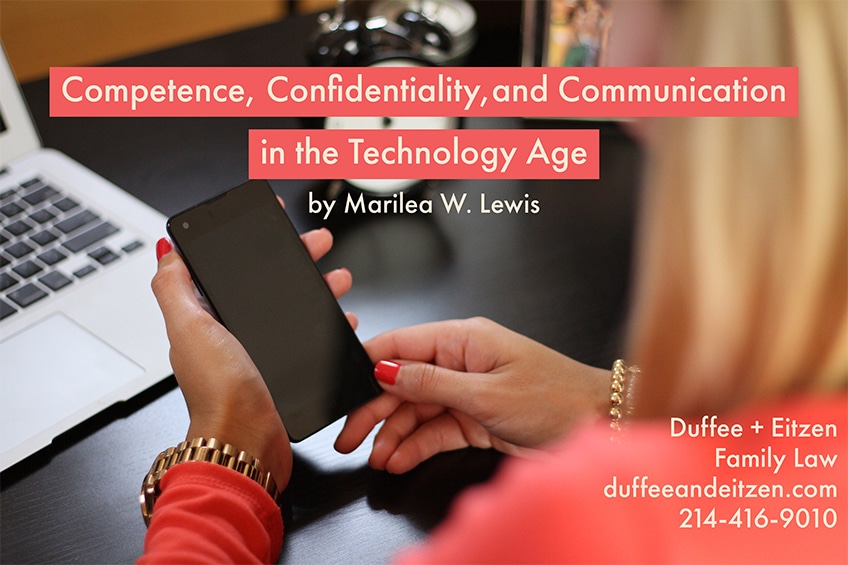Competence, Confidentiality, and Communication in the Technology Age
At the foundation of professional legal representation in Texas are the twin pillars of competence and confidentiality. The Texas Disciplinary Rules of Professional Conduct state these obligations at the very beginning, and provide very well-defined guidance about both competence and confidentiality. In general, a lawyer should not accept or continue employment in a legal matter that the lawyer knows, or should know, is beyond his or her competence. Further, with advances in modern communication technology, the question arises of whether attorneys are always able to maintain the confidentiality of their clients in a competent manner.
What is Confidential Information?
Confidential information, according to the Rules, includes both privileged information and unprivileged client information. Privileged information refers to the information of a client protected by the lawyer-client privilege as defined by state and federal rules of evidence, and includes things like facts about the case, claims and defenses, etc.. Unprivileged client information means all information relating to a client, or furnished by the client, other than privileged information, acquired by the lawyer during the representation of the client, and includes things like addresses, social security numbers, etc.. While the Rules provide for reasons an attorney may reveal confidential information, both privileged and unprivileged, the prevailing thought is that confidential information of any kind may only be revealed in clearly defined instances.
Competency
Generally, it is understood that an attorney should not undertake representation of a client in an area of law in which the attorney is not competent. “Competency,” however, is hard to narrow down. With so many research tools available to the modern attorney, it is easier than ever to be knowledgeable in multiple areas of the law. TheAmerican Bar Association imposes a different standard of competency by imposing a duty on the attorney to be competent in the protection of client information.
The ABA has focused on technology and confidentiality in the process of reviewing its Rules, and has revised them to take into account today’s technology. It includes factors to help in determining what are “competent and reasonable” measures in protecting client confidentiality. These factors include the sensitivity of the information, the likelihood of disclosure if additional safeguards are not employed, the cost of employing additional safeguards, the difficulty of implementing the safeguards, and the extent to which the safeguards adversely affect the lawyer’s ability to represent clients (e.g., by making a device or important piece of software excessively difficult to use).
Implications of Technology
In this day of instant communication and readily available information, what impact do these ethical obligations have for attorneys and their clients? Whereas communication of the past may have been largely hand or type written on paper, or solely in person, today’s attorney-client communications can take many forms, some of which may not be secure enough for attorney-client communications. With smartphones, texting, video chat, cloud computing, and the myriad of other available tools, communication can be instantaneous, albeit susceptible to hacking or surveillance. This isn’t to say that unsecured communications (i.e. texting a client) should be wholly banned as a tool of communication; although it does necessitate extra effort on the part of the attorney to ensure that their devices are secure from third parties, and logins to messaging services are kept confidential.
As technology allows the practice of law to become more efficient, it also imposes ethical burdens upon the practitioner to provide protection for critical information provided in a confidential and privileged relationship. Attorneys need to maintain competency not only in the law, but also in technological advances that directly impact how they receive, disseminate, and protect client information.
